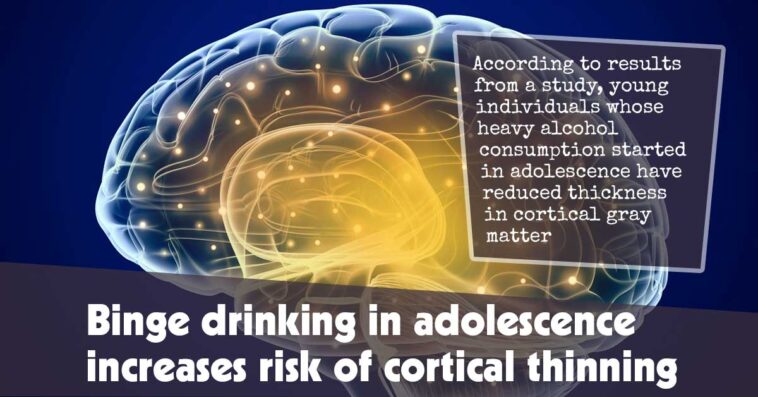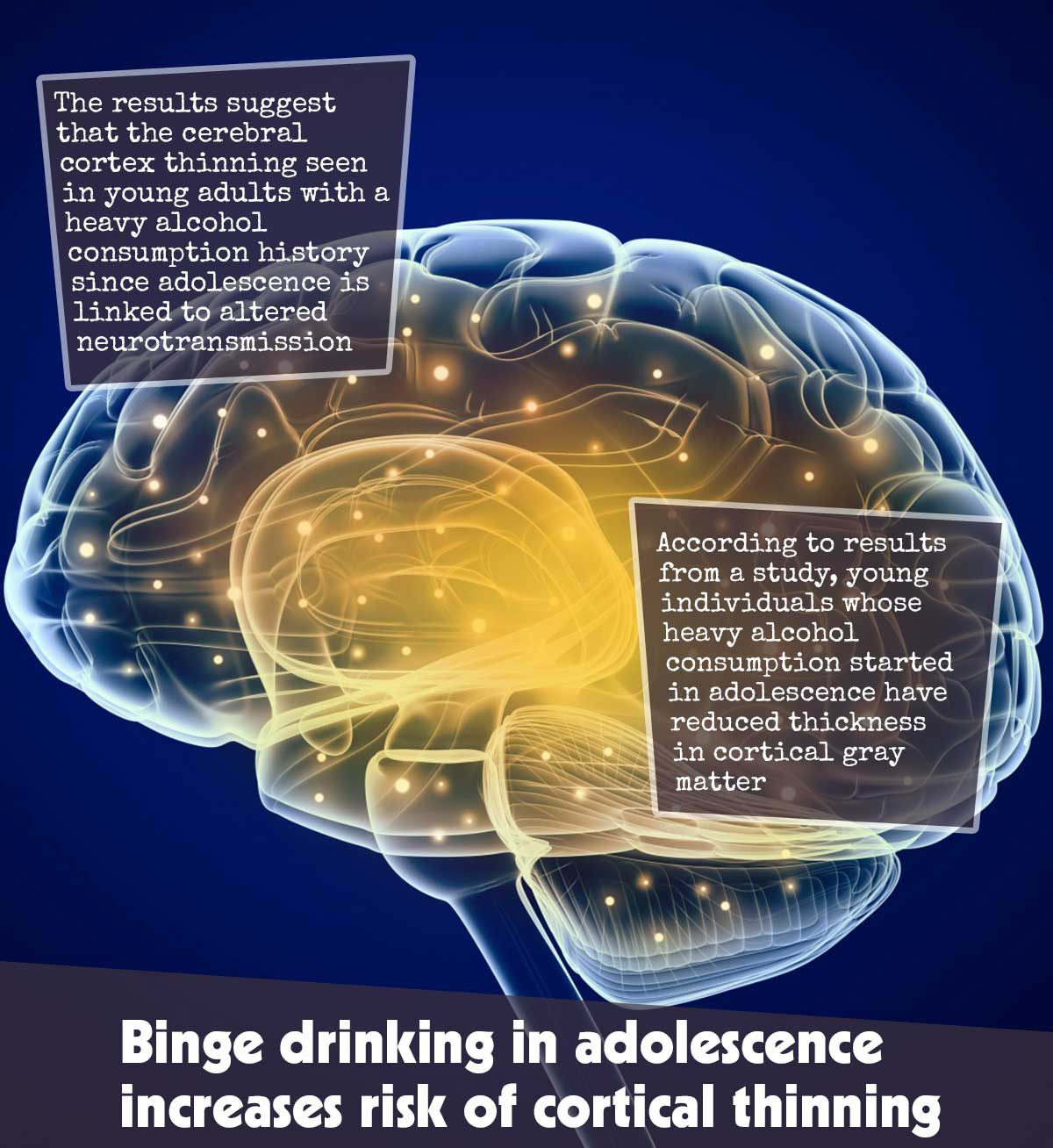Throughout adolescence, the brain goes through extreme development and is especially vulnerable to the harmful effects of alcohol consumption. According to results from a study, young individuals whose heavy alcohol consumption started in adolescence have reduced thickness in cortical gray matter and altered neurotransmission.1✅ JOURNAL REFERENCE
DOI: 10.1111/acer.15119
Previous studies have indicated that recurring binge alcohol consumption in adolescence is linked to central nervous system changes in adulthood, such as greater inhibitory neurotransmission and reduced gray matter volume. The current study looked at the connection between neurotransmission and thickness in gray matter.
The study involved 26 young adults with a history of heavy alcohol consumption, as well as a group of 21 controls who drank little or no alcohol whatsoever. They were monitored for 10 years, from 13 to 18 years old until about 25 years old.
Gray matter volume changes were measured by making use of magnetic resonance brain images, and cortical activity was measured by making use of electroencephalography and simultaneous transcranial magnetic stimulation.
In adolescents who had a heavy alcohol consumption history, reduced average gray matter thickness was seen in some areas of the brain, and also a greater average N45 potential, when in comparison to adolescents who drank little or no alcohol whatsoever.
The N45 potential is indicative of the inhibitory GABA activity and the systems of excitatory glutamate neurotransmitters. In the heavy alcohol consumption group, reduced thickness of gray matter was linked to an elevated N45 potential, specifically in the parietal and frontal lobes.
The results suggest that the cerebral cortex thinning seen in young adults with a heavy alcohol consumption history since adolescence is linked to altered neurotransmission, particularly in the parietal and frontal lobes. More studies are however required to evaluate the mechanisms that underlie these results.




